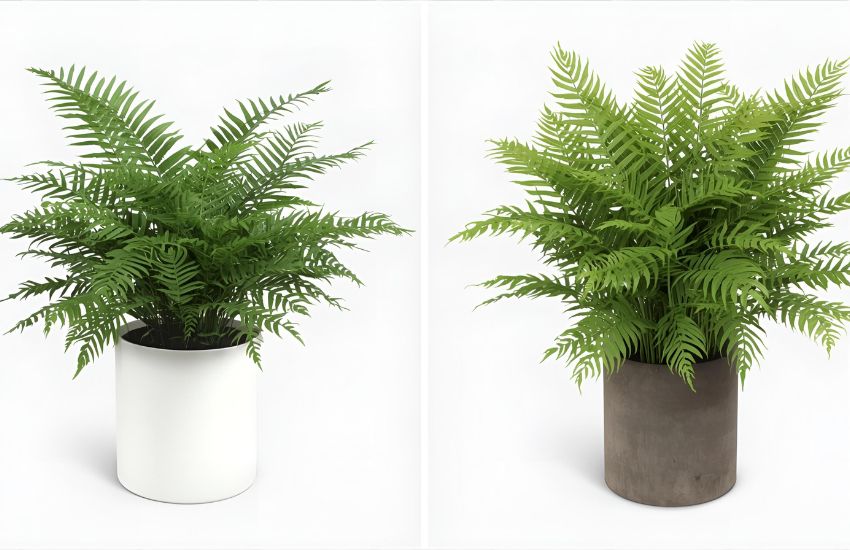Finding the best plant prices for your indoor garden can feel overwhelming, especially when you want to balance beauty, health, and affordability. If you’re considering adding a Boston Compacta to your collection, understanding the factors that influence its cost is essential. Boston Ferns, particularly the Compacta variety, are prized for their lush, compact fronds and vibrant foliage, making them a popular choice for indoor spaces. Prices for a healthy Boston Compacta Fern typically range between PKR 1,500 and PKR 5,000, depending on size, pot type, and seasonal availability. Factors like soil quality, root health, humidity levels, and leaf condition can significantly affect the value of your plant, while market trends and delivery options may influence affordability.
The Boston Compacta, a popular indoor Boston Fern, typically costs between PKR 1,500 and PKR 5,000, depending on size, pot type, and plant health. Its lush, compact fronds and vibrant foliage make it an attractive, low-maintenance choice for cost-effective gardening and sustainable indoor plant setups.
By focusing on cost-effective gardening and sustainable choices, you can enjoy the benefits of this beautiful fern without overspending. In this guide, you will explore practical insights into Boston Compacta care, seasonal price fluctuations, and tips to select the healthiest plants, helping you make informed decisions while adding vibrant greenery to your indoor space. You’ll also learn how to find affordable plants that match your style and budget.
Understanding Boston Fern Plant Prices for Indoor Gardening

Factors Influencing Boston Fern Prices
When you consider adding a Nephrolepis exaltata compacta to your indoor plant collection, understanding the dynamics of plant prices is crucial. The cost of a Boston Fern can vary based on size, age, foliage density, and overall health. Lush, vibrant fronds with a full texture usually command higher prices, while smaller or less mature plants may be more affordable for beginners. Seasonal demand also affects pricing, as the growing season and availability of healthy stock influence market trends.
Indoor Conditions and Care Considerations
As an indoor fern plant, the Boston Compacta thrives under moderate sunlight and stable temperature conditions. Maintaining proper moisture levels and misting the fronds regularly ensures the plant remains healthy and prevents dry air from damaging delicate foliage. You can place the fern in hanging baskets or planters with a tray of water or pebbles to boost humidity, enhancing its lush, arching fronds. Choosing a plant that is already accustomed to lower light environments may slightly increase its price but ensures better longevity indoors.
Cost-effective Gardening and Sustainable Choices
Selecting affordable plants that fit your budget does not mean compromising on quality. By monitoring market trends and opting for plants with sturdy roots and healthy fronds, you make cost-effective gardening choices that are also sustainable. Proper potting mix, gentle fertilization, and attention to indoor decor placement can extend the life of your Boston Fern, giving you long-term value for your investment.
Packaging and Delivery Factors
If you are purchasing online or through delivery services, packaging quality can affect the final price. Properly cushioned plants prevent root rot and frond damage during transit. Choosing suppliers who prioritize plant health and sustainable packaging may cost slightly more but ensures your fern arrives in pristine condition, ready to enhance your home or office greenery.
By understanding these pricing factors, you can confidently select a Boston Compacta Fern that complements your indoor space while supporting sustainable choices and cost-effective gardening practices.
Conclusion
Understanding the plant prices of a Boston Compacta Fern allows you to make informed decisions for your indoor garden while balancing beauty, health, and affordability. By considering factors such as size, foliage density, root health, and seasonal availability, you can select affordable plants that provide long-lasting value. Paying attention to proper indoor conditions, including moderate sunlight, humidity, and care routines, ensures your fern thrives and maintains its lush, arching fronds.
Focusing on cost-effective gardening and sustainable choices not only protects your budget but also promotes responsible plant ownership. Thoughtful selection, proper potting mix, gentle fertilization, and careful packaging or delivery can prevent damage and maximize the lifespan of your Boston Fern. With this guide, you are equipped to confidently choose and care for a Boston Compacta, bringing vibrant greenery into your home or office while making smart, sustainable, and affordable decisions.
Bring home your Boston Compacta today and elevate your indoor garden with a touch of elegance, lush foliage, and lasting beauty.
Frequently Asked Questions (Boston Compacta Price: Indoor Boston Fern Plant Guide)
What is the price of Boston fern?
The price of a Boston fern in Pakistan generally ranges between ₨ 1,000 and ₨ 3,500, depending on its size, age, and overall health. Smaller potted plants are more affordable, while larger, mature ferns with fuller fronds cost more, making them a versatile option for indoor decoration.
Can Boston fern grow indoors?
Yes, Boston ferns can grow indoors. They thrive in indirect light, high humidity, and well-draining soil. Regular watering and occasional misting help maintain lush, green fronds. With proper care, Boston ferns make beautiful, low-maintenance indoor plants that enhance air quality and add a touch of greenery.
Is Boston fern a lucky plant?
Yes, the Boston fern is considered a lucky plant in many cultures. It is believed to bring positive energy, prosperity, and good fortune to homes and offices. Its lush, vibrant foliage also symbolizes growth and renewal, making it both an attractive and auspicious indoor plant.
Are Boston ferns full sun or shade?
Boston ferns prefer bright, indirect light and do best in partial to full shade. Direct sun can scorch their fronds, while low light slows growth. Place them where they receive filtered light, such as near north- or east-facing windows or shaded outdoor spots.
